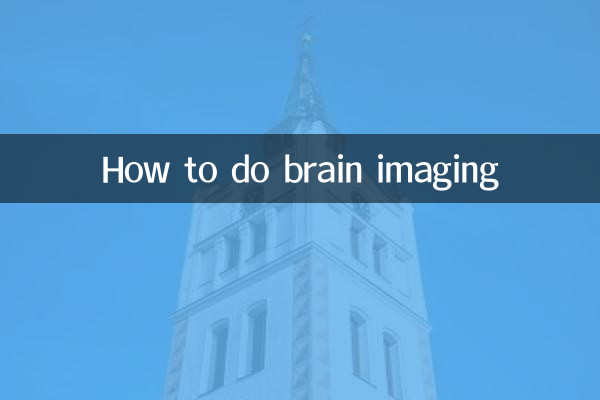How to do brain imaging
Brain imaging is an important medical imaging technology and is widely used in the diagnosis of cerebrovascular diseases, tumors, trauma and other diseases. With the advancement of medical technology, brain imaging methods and processes are constantly being optimized. This article will introduce in detail the steps, precautions and related data of brain imaging to help you better understand this examination technology.
1. Common methods of brain imaging

Brain imaging mainly includes the following methods:
| method | principle | Applicable scenarios |
|---|---|---|
| CT Angiography (CTA) | X-rays are used to scan blood vessels by injecting contrast media | Cerebrovascular disease and aneurysm screening |
| Magnetic resonance angiography (MRA) | Generating blood vessel images using magnetic fields and radio waves | Patients without radiation requirements |
| Digital subtraction angiography (DSA) | Contrast agent is injected through the catheter to observe blood vessels in real time | Precise diagnosis and interventional treatment |
2. Specific steps of brain imaging
Taking the most common CT angiography (CTA) as an example, the steps for brain angiography are as follows:
| step | Detailed description |
|---|---|
| 1. Preparation | Patients need to fast for 4-6 hours, remove metal objects, and sign an informed consent form |
| 2. Inject contrast agent | Iodine contrast agent is injected intravenously, usually in a dosage of 50-100ml |
| 3. Scanning imaging | The patient lies flat on the examination table, and the CT machine quickly scans the head |
| 4. Image processing | Computer reconstructs three-dimensional images of blood vessels for doctors to diagnose |
3. Precautions for brain imaging
1.Contraindications: Patients who are allergic to iodine contrast media or have severe renal insufficiency need to be cautious.
2.Before inspection: It is necessary to inform the doctor of drug allergy history, pregnancy status, etc.
3.After inspection: Drink plenty of water to speed up the discharge of contrast agent and observe whether there is any allergic reaction.
4. Data related to brain imaging
Here are some key data from brain imaging:
| project | numerical value |
|---|---|
| Check time | 10-30 minutes |
| Radiation dose (CTA) | 2-10mSv |
| Contrast media adverse reaction rate | 1%-3% |
| Diagnostic accuracy | 90%-95% |
5. Latest developments in brain imaging
In recent years, brain imaging technology has continued to innovate, such as:
1.AI-assisted diagnosis: Artificial intelligence can quickly analyze contrast images and improve diagnostic efficiency.
2.low dose technology: Reduce radiation dose and improve safety through optimized algorithms.
Summary: Brain imaging is an important medical examination technology. With reasonable steps and precautions, the examination can be completed efficiently and safely. If you have relevant needs, it is recommended to consult a professional doctor to choose the most suitable imaging method.

check the details

check the details